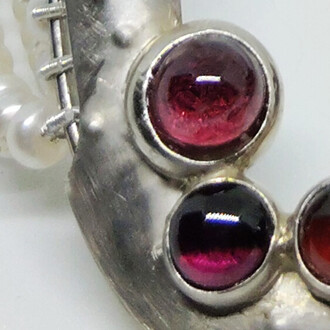Terre degli Uffizi returns to San Casciano with an exhibition exploring, for the first time, the work of macchiaiolo Stanislao Pointeau. A tribute to Prof. Carlo Del Bravo.
Terre degli Uffizi returns to San Casciano with a monographic exhibition devoted, for the very first time, to the Franco-Florentine painter Stanislao Pointeau and to the role he played in the birth and development of the Macchiaolo style in Florence and in Tuscany. The exhibition at the Museo Giuliano Ghelli, due to run from 26 October to 16 February, is entitled Stanislao Pointeau, a Tuscan Macchiaiolo of French descent. The exhibition is curated by Michele Amedei and organised by the Comune di San Casciano in Val di Pesa as part of the Fondazione CR Firenze and Gallerie degli Uffizi exhibition programme, in the context of their respective Piccoli Grandi Musei and Uffizi Diffusi schemes. After the exhibition devoted to Jacopo Vignali, this is once again a tribute to Carlo del Bravo, the diligent art historian from San Casciano whose research in the late 1970s led to Stanislao Pointeau’s rediscovery.
Stanislao was born in Florence to Jean Louis Pointeau, a wine salesman from Blois in the Loire Valley, and his Florentine wife Giovanna Piacenti. He enrolled at the local Academy of Fine Arts in the early 1850s, but while studying there, he also frequented the Caffè Michelangiolo where he, Telemaco Signorini and other artists founded the Macchiaioli group. In their company, he not only rubbed shoulders with the French community in the city but also explored Florence and its surroundings. He focused in particular on the banks of the Arno, which were to become the source of inspiration for his Renaioli d’Arno (Arno Sand-dredgers), a painting that attracted praise when it was shown at the Italian National Exhibition held in Florence in 1861. After his Macchiaiolo period, Pointeau moved to Pisa in 1867, where he was isolated from his Florentine friends but he managed to stay in touch with them, and with Diego Martelli in particular, all the same. The final phase in his artistic career was influenced by the Symbolist climate represented, in the Pisa area, by a community of English artists associated with the Roman painter Nino Costa.
The exhibition is divided into four sections broken down chronologically. The first section, entitled “Stanislao Pointeau and his Sienese and French friends in mid-19th century Florence”, introduces visitors to Pointeau’s earliest works and to the role he played as a go-between, mediating between Tuscan and French figurative culture in the middle years of the century. The exhibits in this section include a group of charming engravings by Marcellin Desboutin which once belonged to Pointeau, and a series of portraits of the artist painted by his Sienese friends Angelo Visconti and Amos Cassioli between 1859 and 1861.
The second section, entitled “From the start of his artistic career to the macchia”, introduces visitors to the early years in Pointeau’s artistic career by showcasing a selection of paintings and a number of pencil and watercolour drawings on paper sketched while he was travelling in the Mugello region in 1851.
The third section, the heart of the exhibition, entitled “The Macchiaiolo Years”, explores Pointeau’s relationship with the art of the Macchiaioli, including that of Telemaco Signorini whose painting On the banks of the Arno now in the Galleria d’Arte Moderna in Florence, will also be on display. Pointeau’s own work in this section of the exhibition includes his Renaioli d’Arno (Arno Sand-dredgers), Shoeing an Ox and other paintings and drawings that had a considerable impact on Tuscan painting in the late 1850s and the early years of the following decade.
The exhibition winds up with a section entitled “Travels in southern Italy and the move to Pisa in 1867”, showcasing a number of paintings on canvas and on wood that reveal Pointeau’s marking of distance from his experimental work with the Macchiaiolo style and his subscription to Symbolism, a move that he made on discovering the work of Italian and international artists resident in, or passing through, Pisa at the turn of the century.














